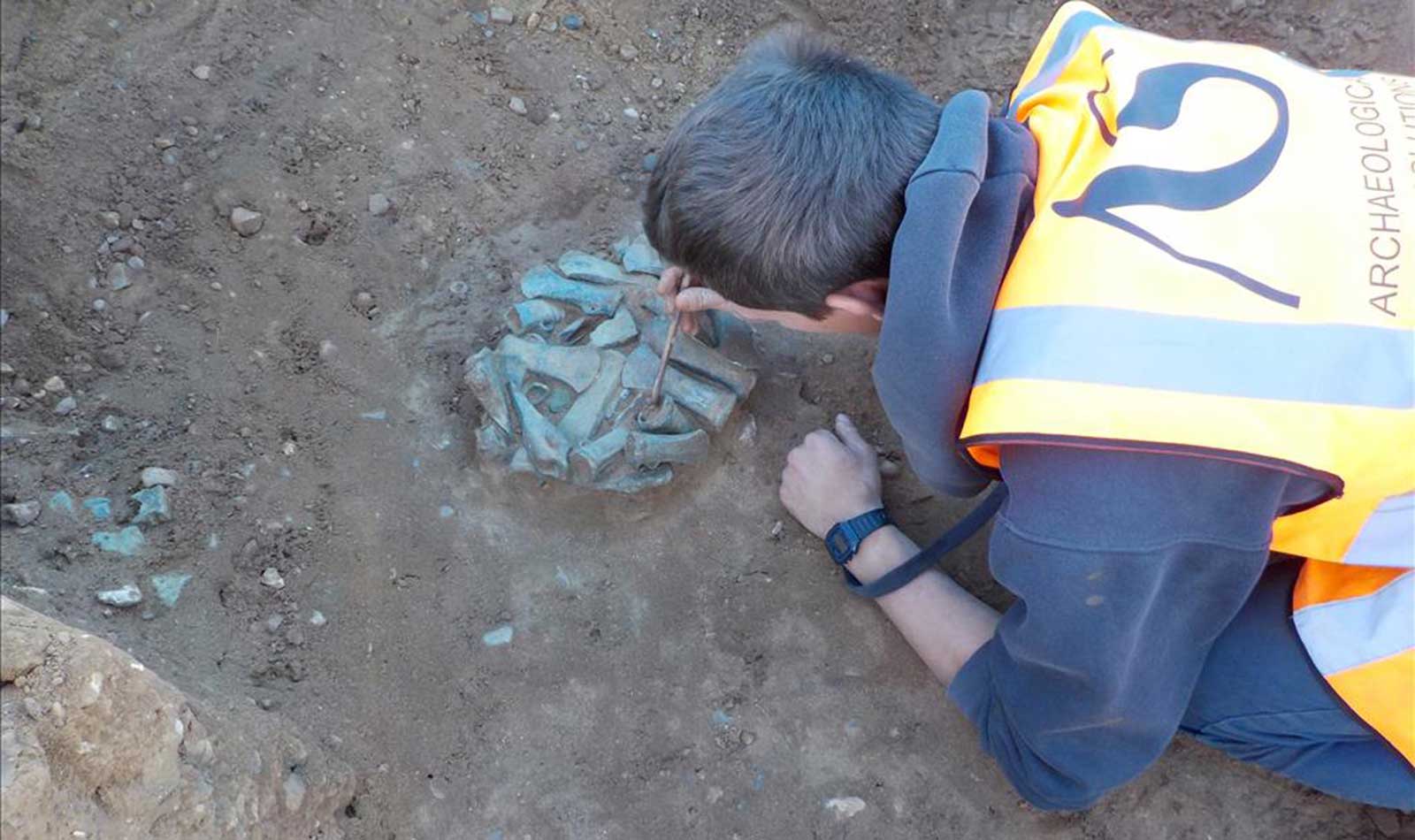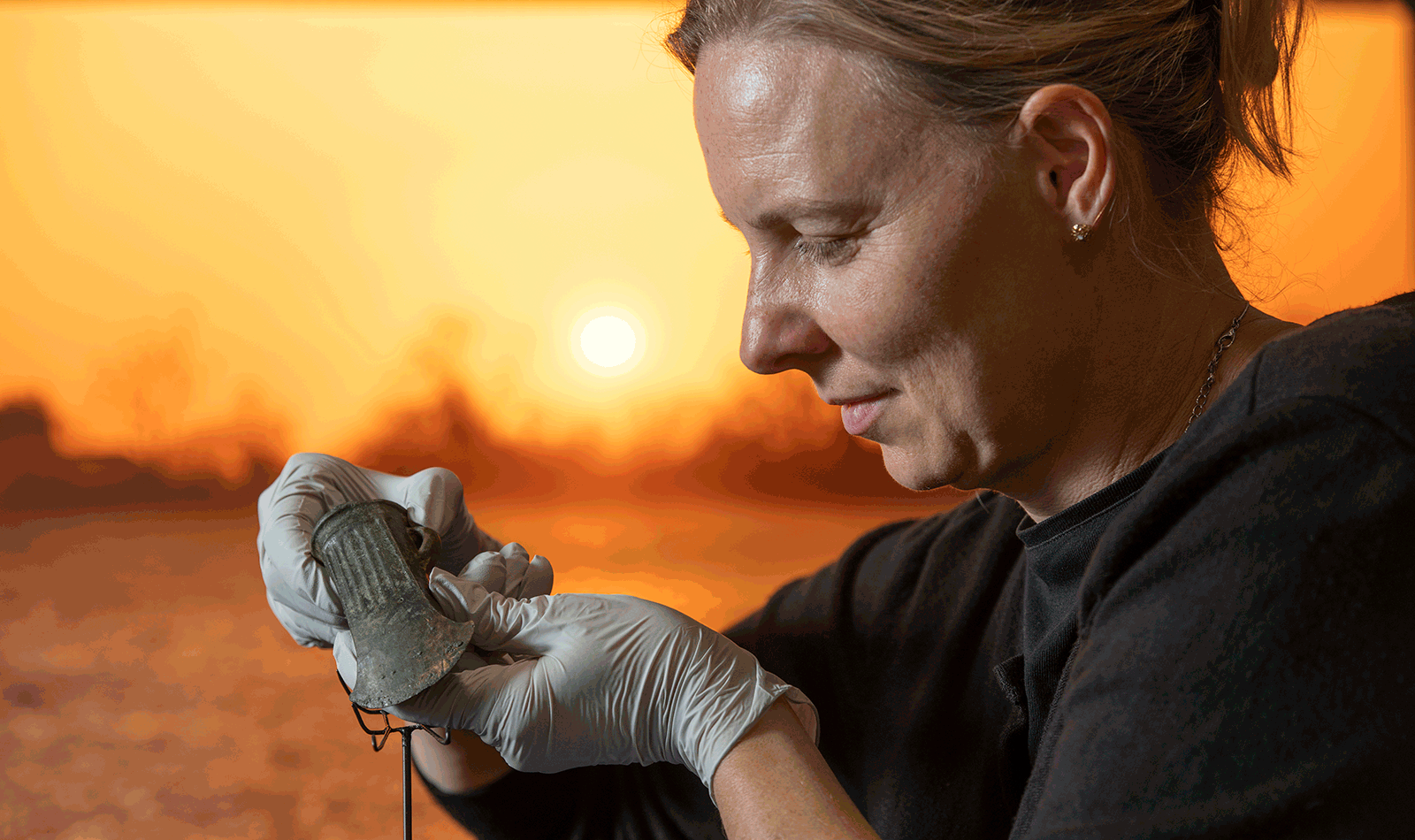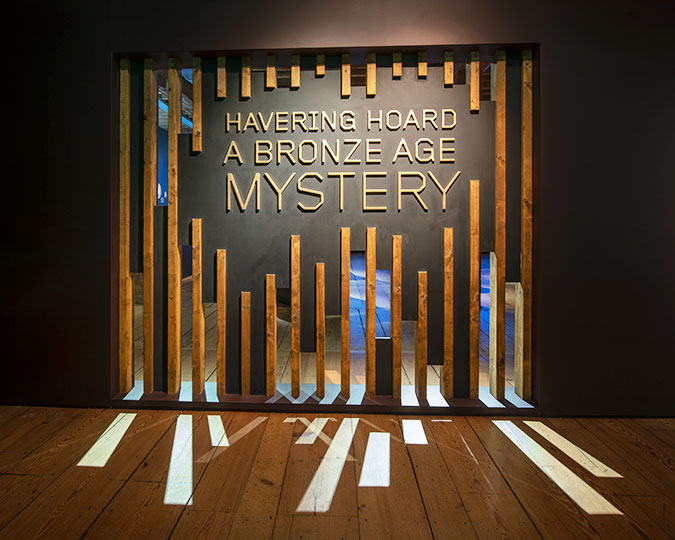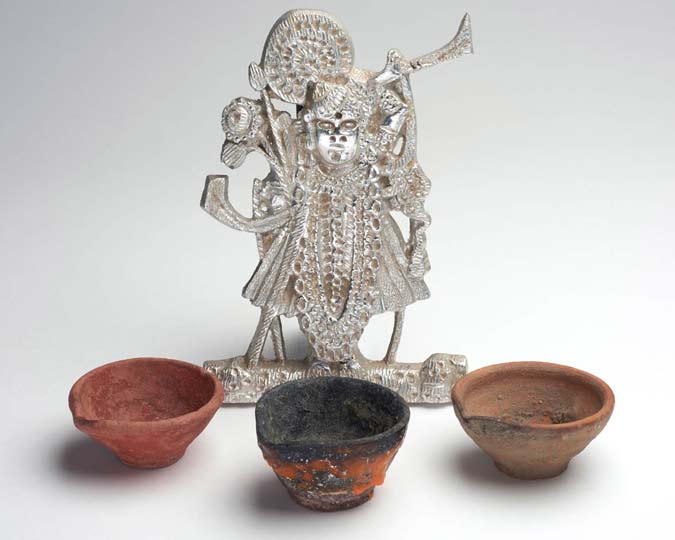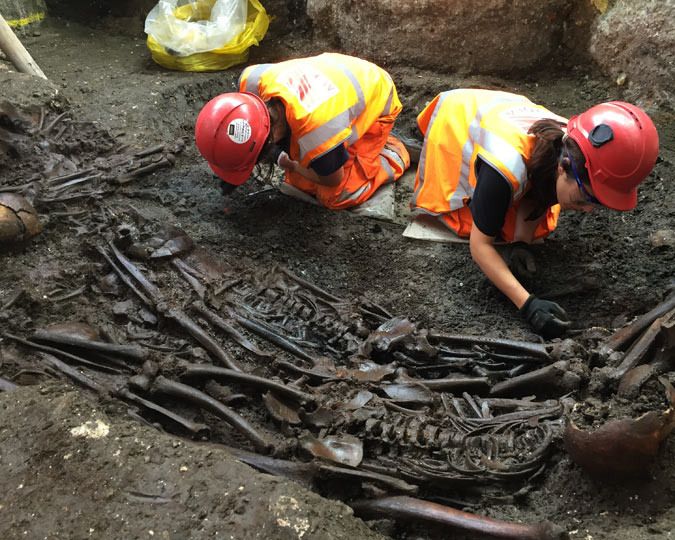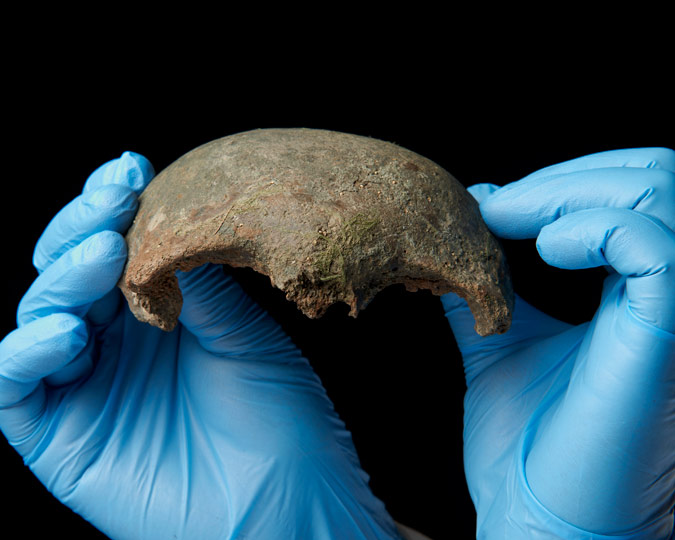The Havering Hoard is the largest Bronze Age hoard found in London and the third largest found in the country. Buried on the perimeter of a Late Bronze Age enclosure in the modern-day London borough of Havering, it comprises 453 bronze items. Discover more about this fascinating collection of items right here.
What is a hoard exactly?
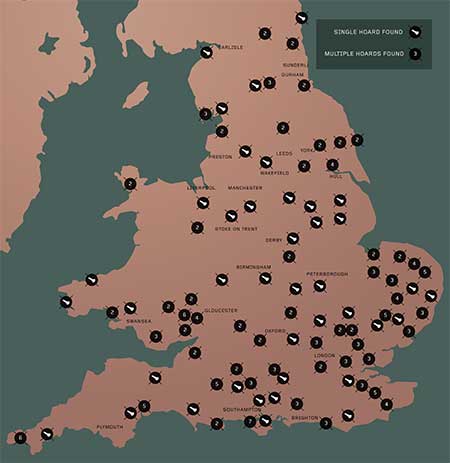
Map showing the Bronze Age hoards that have been reported to the Portable Antiquities Scheme
A hoard is a large number of valuable objects that have been collected and buried, often in a secret location. In Late Bronze Age Britain the hoarding of metalwork appears to have been a widely understood practice. We know this because hoards of various sizes have been found across the majority of the country and also across Europe. We don’t know exactly why this practice was occurring but the objects in the hoards can give us clues about life in the Bronze Age.
What are the 453 objects in the Havering Hoard?
The 453 complete and fragmentary objects in the Hoard include a range of tools, weapons, fixtures and fittings, ornaments and metalworking material. Tools make up the largest category of objects and although they may not be the most glamourous type of item, the abundance of them in the Hoard reflects a society that used the land. Of the 190 tools in the Hoard, 168 (or a huge 86%) are complete axes or axe fragments. By quite a margin, they are the most common cast bronze object in the Hoard, which suggests their importance in the everyday toolkit of Bronze Age people.
Why so many axes?
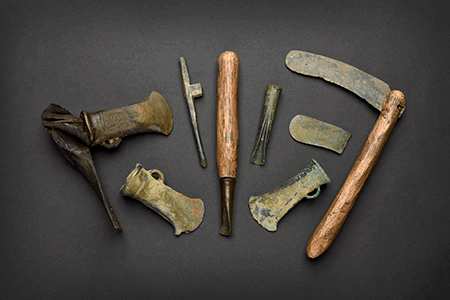
A range of tools from the Havering Hoard. Alongside are complete examples from the Museum’s collection.
The axe was the essential tool of the Bronze Age. The main reason for this was the need to be able to chop down wood for a range of uses and purposes. Although the period is named for the introduction and use of bronze, Dr James Dilley, Prehistoric Technology Specialist, argues that wood was in fact the most important material to all aspects of Bronze Age life . Many of the tools within the Hoard relate to wood working, from the axes to gouges and chisels. There was no wood contained within the Hoard, only metal. The photograph shows objects from the museum’s collections with replica wooden handles and the axe on the left has the remains of the original Bronze Age handle which has survived due to being submerged in the Thames riverbed.
Why was wood so important?
Wood was a source of fuel for light and heat. It was used in the construction of dwellings and other buildings, fences, boats, carts, furniture and tools; every axe, for example, needed a wooden handle. Wood was also required to make charcoal, which was vital to Bronze Age technology. Only a charcoal fire could attain a high enough temperature of over 1,100℃ to smelt the metal ores and then melt the resulting metal for casting bronze. Sometimes, wood also got in the way of working the land. As crop farming and the raising of livestock increased, trees were cleared away to open up space and create fields.
Simply put, wood was in huge demand. In fact, environmental evidence shows that the Bronze Age was a period of large-scale deforestation.
Back to the axe
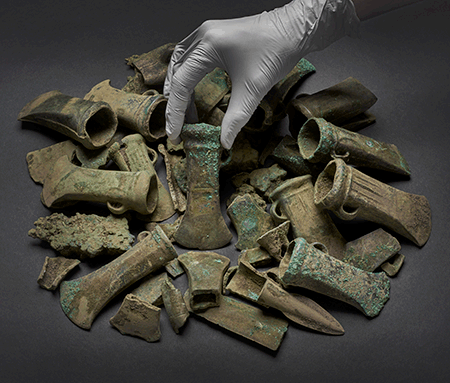
A selection of objects from the Havering Hoard showing some of the variety in axes contained in the Hoard.
It was the axe that was key to accessing timber resources. The obvious use was in the felling of trees. However, the axes in the Havering Hoard are of many different shapes and sizes. This suggests its versatility as a tool and hints at its use for a range of additional woodworking tasks like stripping bark and cutting branches off trees, splitting and chopping logs, or shaping wood. Axes were also possibly used in other activities, such as butchering and hide-scraping.
Just a tool?
Although a useful tool, axes could also be effective weapons during close combat. The weapons in the Hoard –spearheads and swords – are evidence of violence within the Late Bronze Age and suggest the emergence of a hierarchical society as confrontations erupted over land, resources or social status. As well as being highly effective weapons, swords were considered valuable objects, and signs of status and power. However, it was the axe that was part of the wider population’s daily toolkit. Excavations of five Late Bronze Age roundhouses at the famous Must Farm site in Cambridgeshire found that each dwelling had a bronze assemblage that included seven axes, two spears, two sickles, two chisels/gouges and a razor. So axes appeared to be ready to hand and could have easily crossed over from tool to weapon in times of threat.
Spoilt for choice
A closer look at the axes in the Havering Hoard reveals a great variation in type and decoration. The most common axe type in the Hoard is the South-Eastern socketed axe which, as the name suggests, are found widely across the South East of Britain and are likely to have been made locally. Very little evidence for metalworking locations exists so the origins for some objects are suggested based on concentrations of where they were found.
Metalwork specialist Dr Sophia Adams suggests their dominance in the complete axes of the Havering Hoard could indicate that they were easier, or more reliable, to produce. The moulds required would have been simpler and therefore quicker to make than those of more decorated and more angular axes.
Workmanship
The level of workmanship seen in the axes also reinforces their status as a tool of everyday life. Many still have the casting seam visible down the sides, where the two halves of the mould would have joined. It wasn’t necessary to the function of the axe to polish down this evidence of how it was made. This lack of finishing suggests that axes were in demand and hence being made at great speed.
Evidence of use
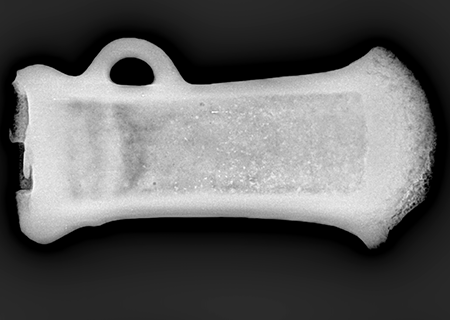
The x-ray of this axe shows a very thin blade due to repeated sharpening, which has resulted in it getting close to breaking through to the hollow soc.ket
All of the axes in the Hoard have evidence of being sharpened and used. Some have nicks out of their blades others have been sharpened repeatedly to the point that the blade is about to break through into the hollow socket.
More work to be done?
The axes have a powerful story to tell, they give an insight into everyday Bronze Age life, they show us what was important for survival. However, their significance extends beyond just a tool. Every axe, sword and spear, every fragment was deliberately chosen to be included in the Havering Hoard. The objects were carefully packed and placed within the ground and never retrieved. They lay there for thousands of years until revealed by archaeologists. Their story does not end here, more research is being carried out on the site and the Havering Hoard, more information may come to light to help us understand the people who lived during this fascinating period of time.








